
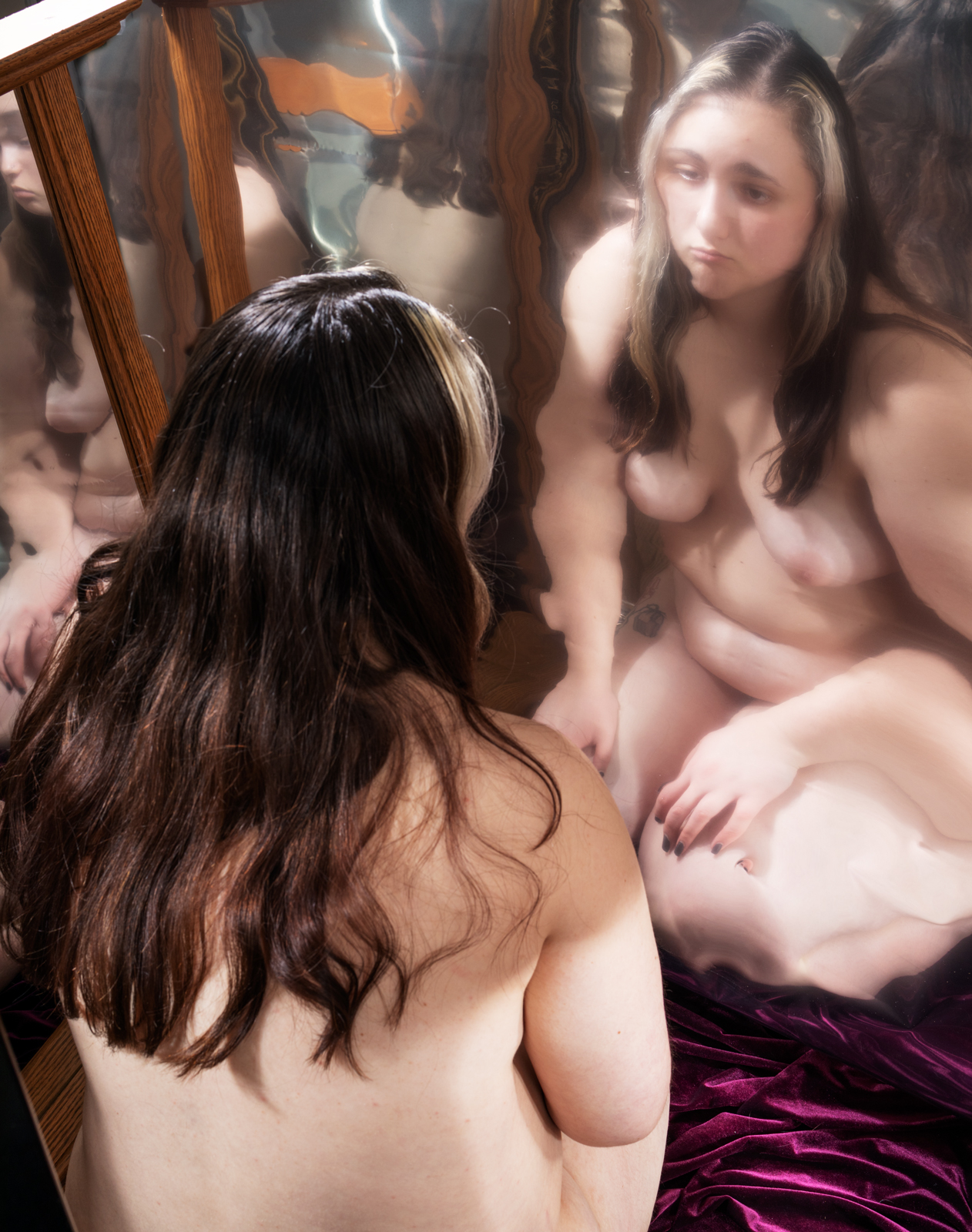
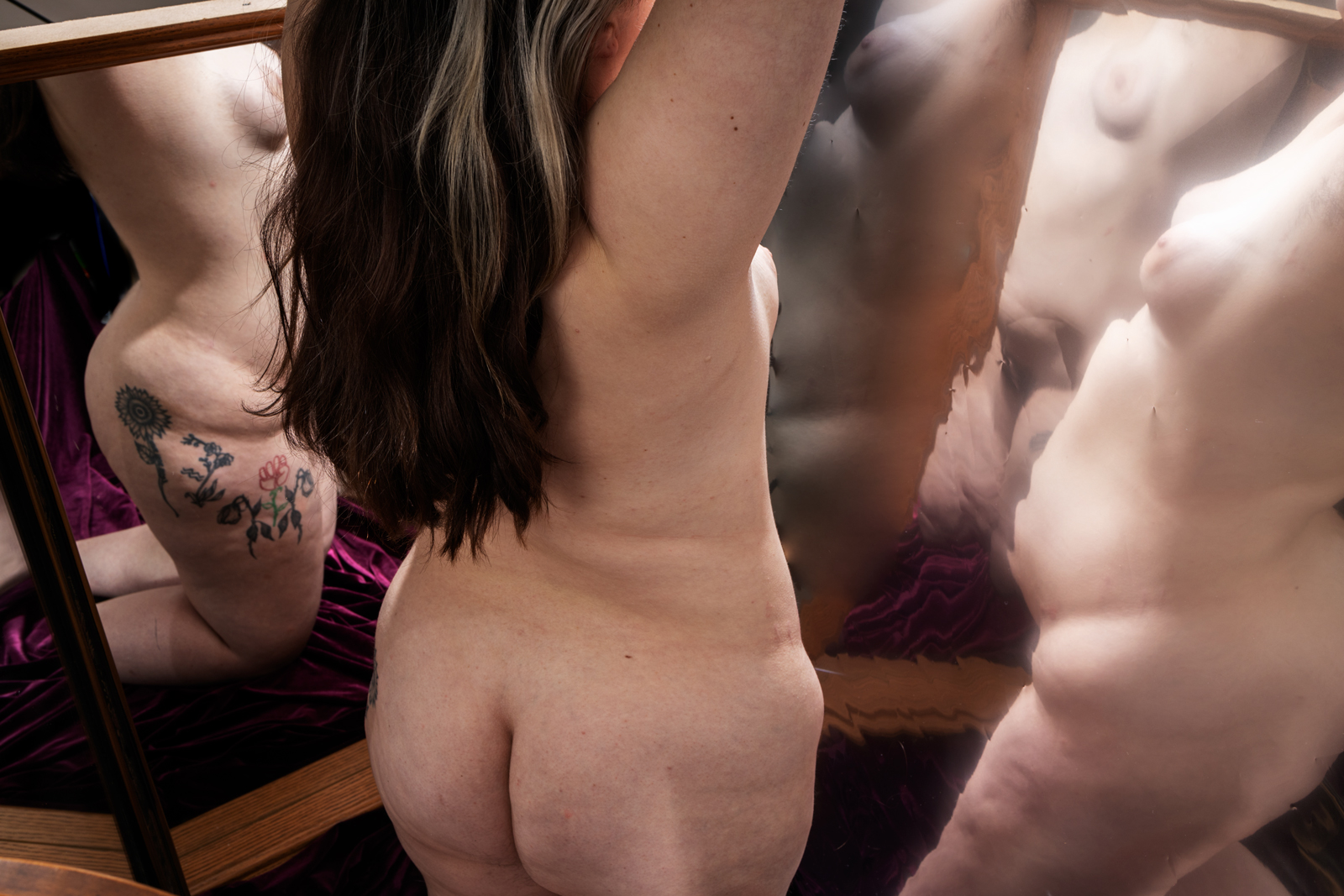

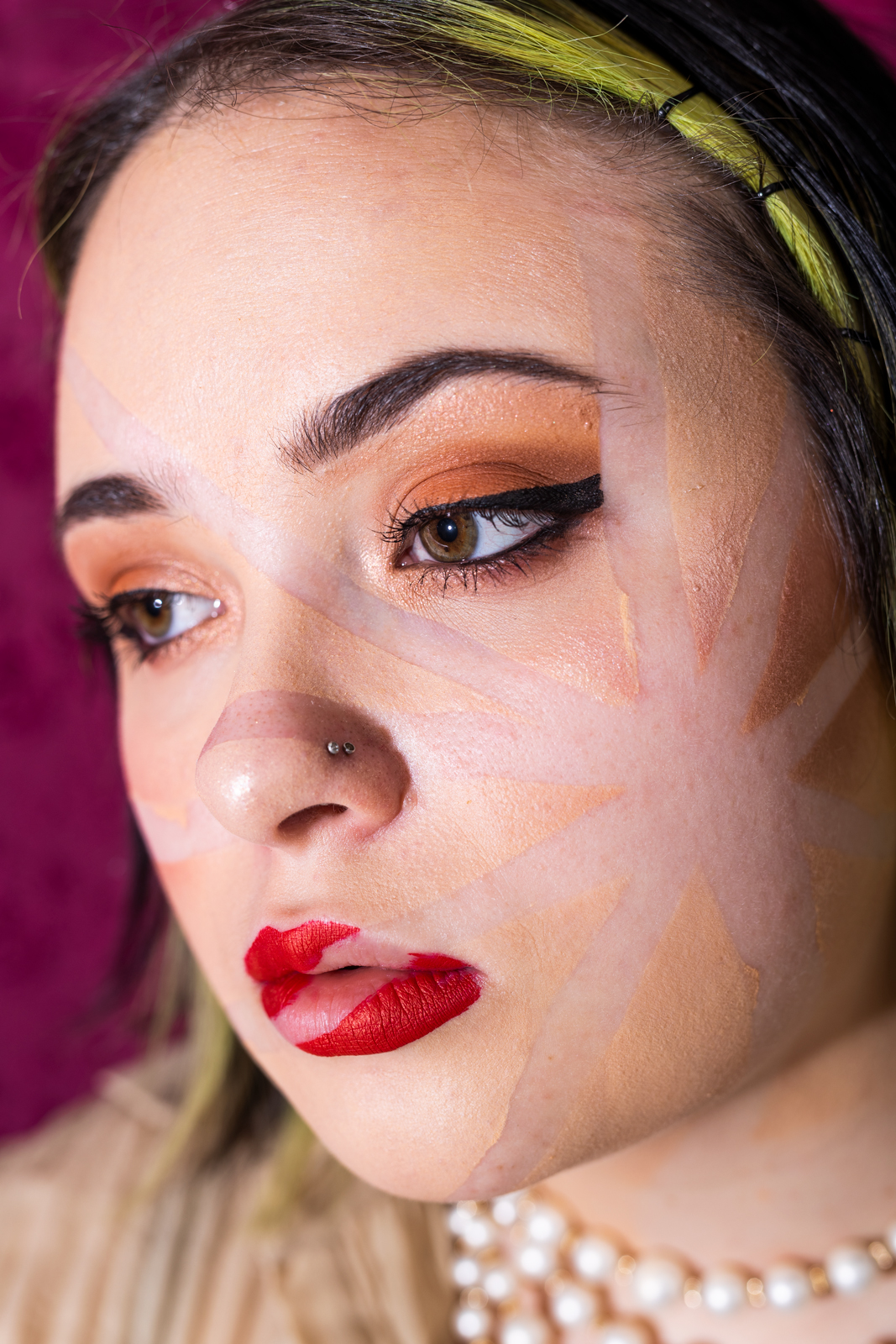
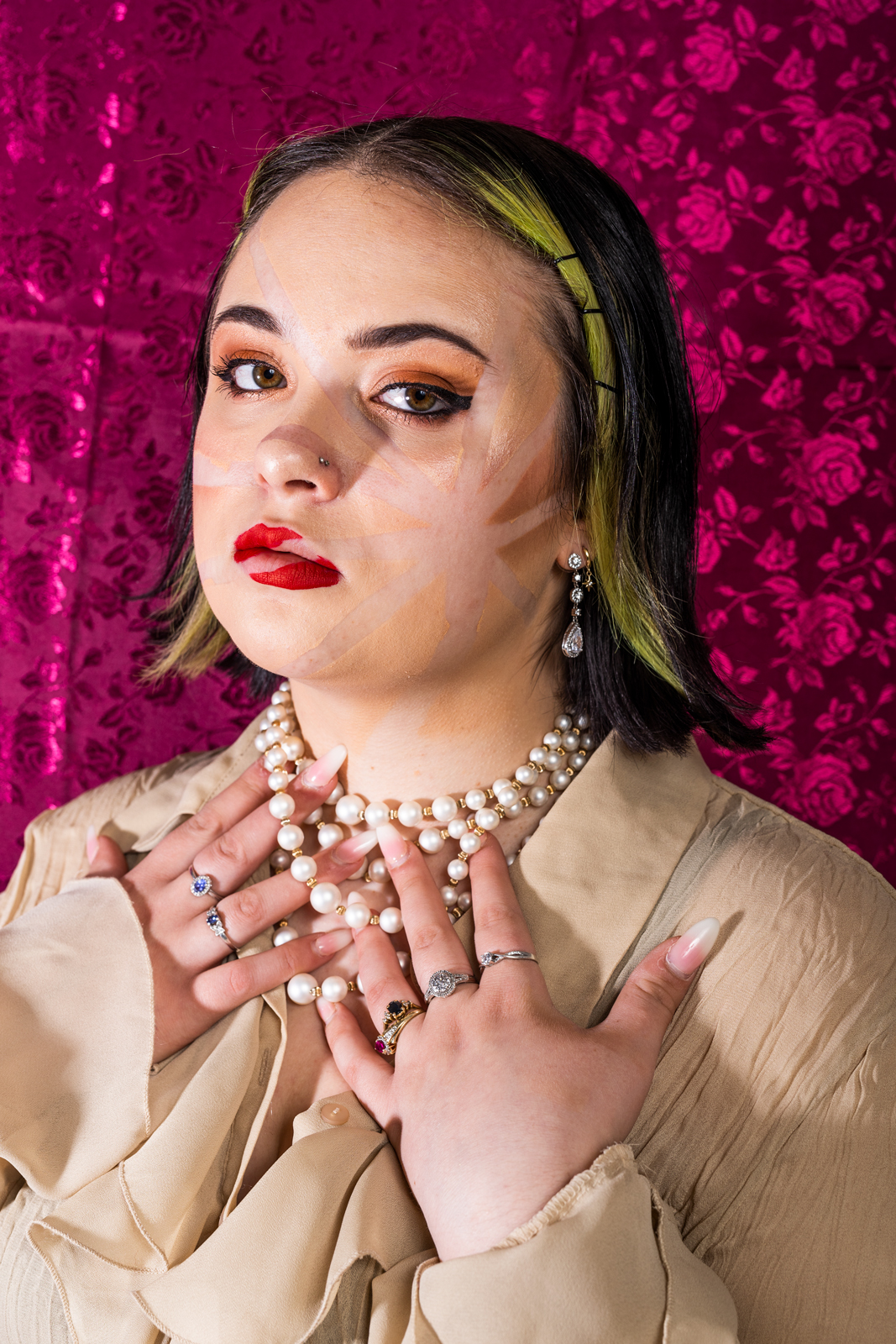
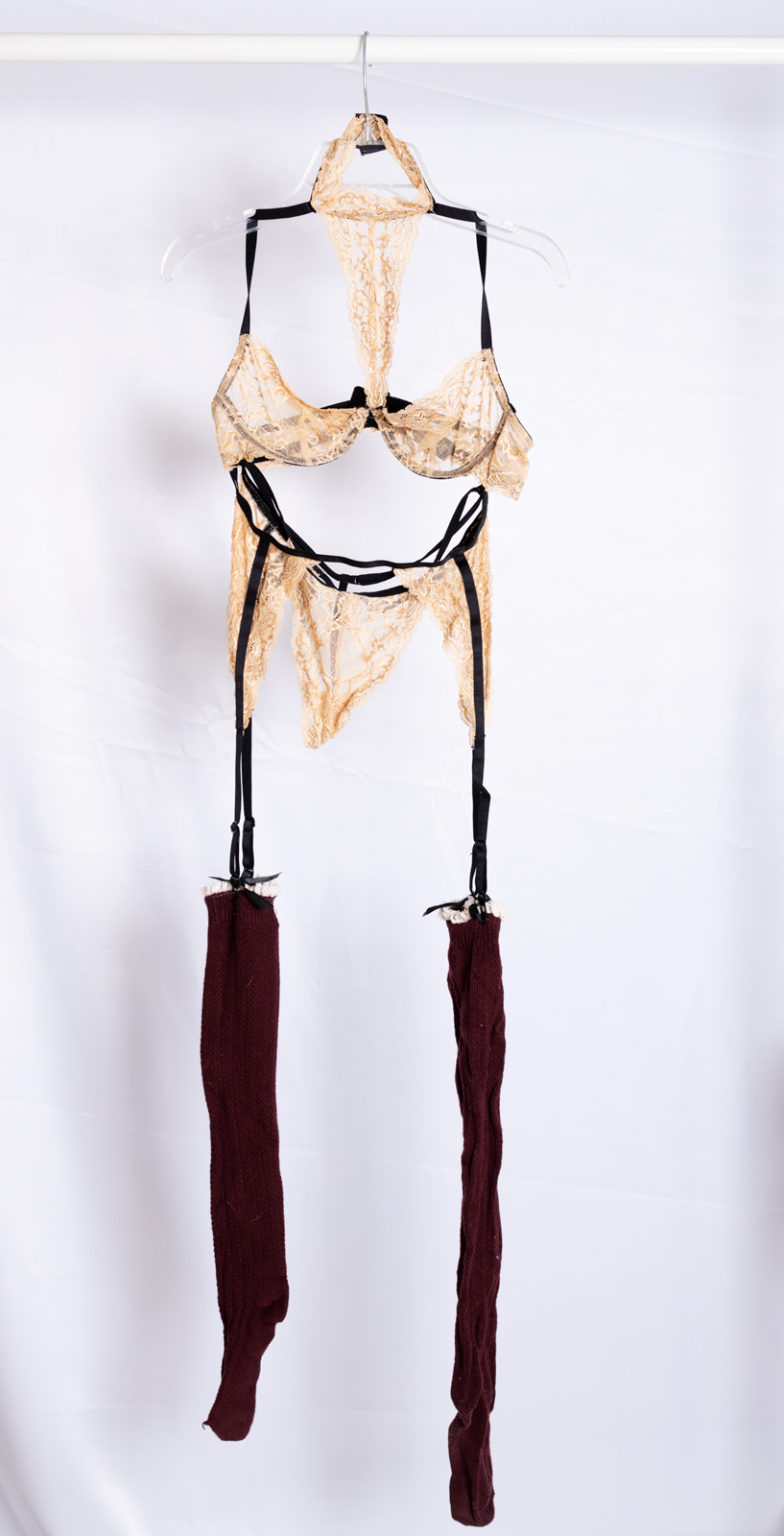
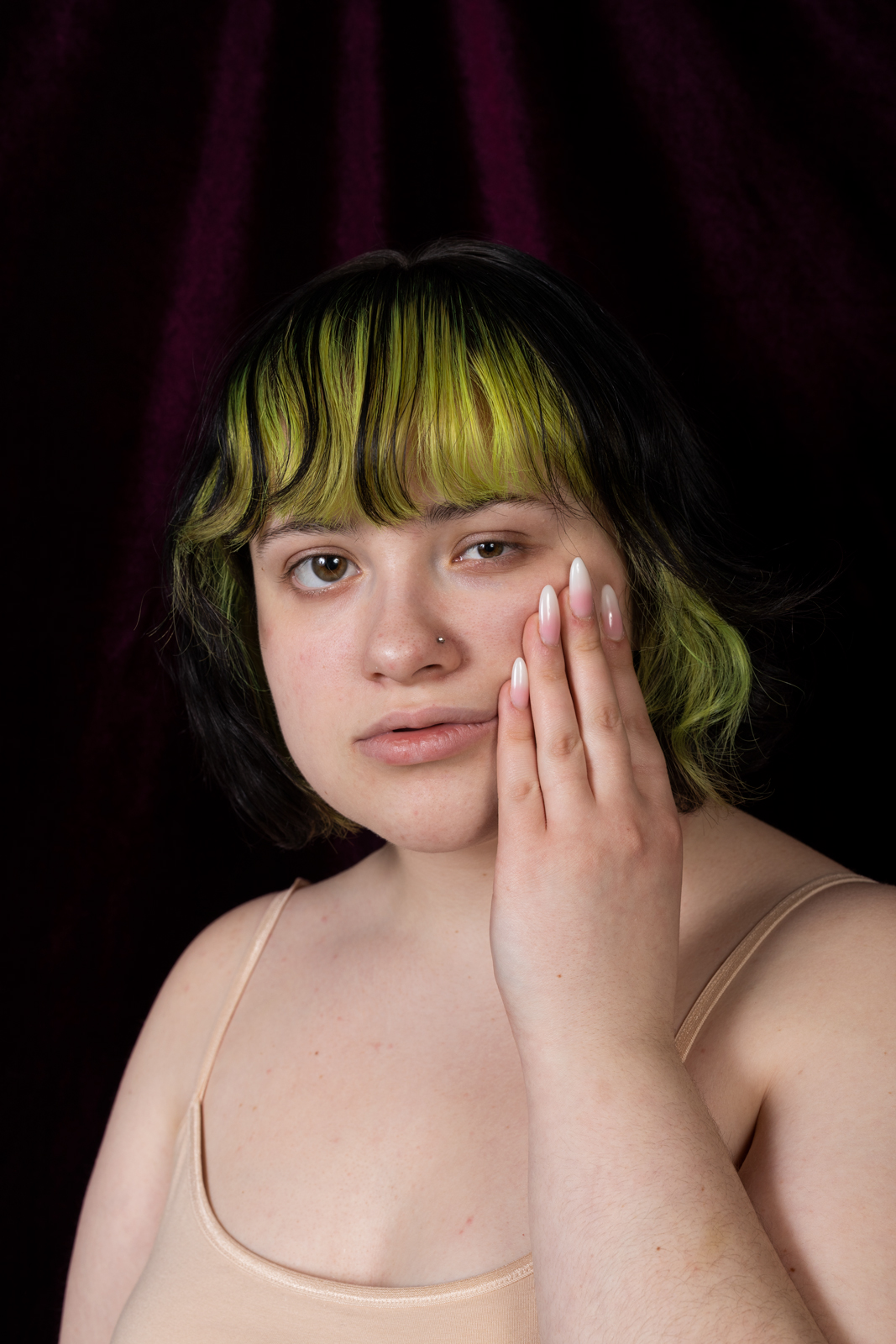
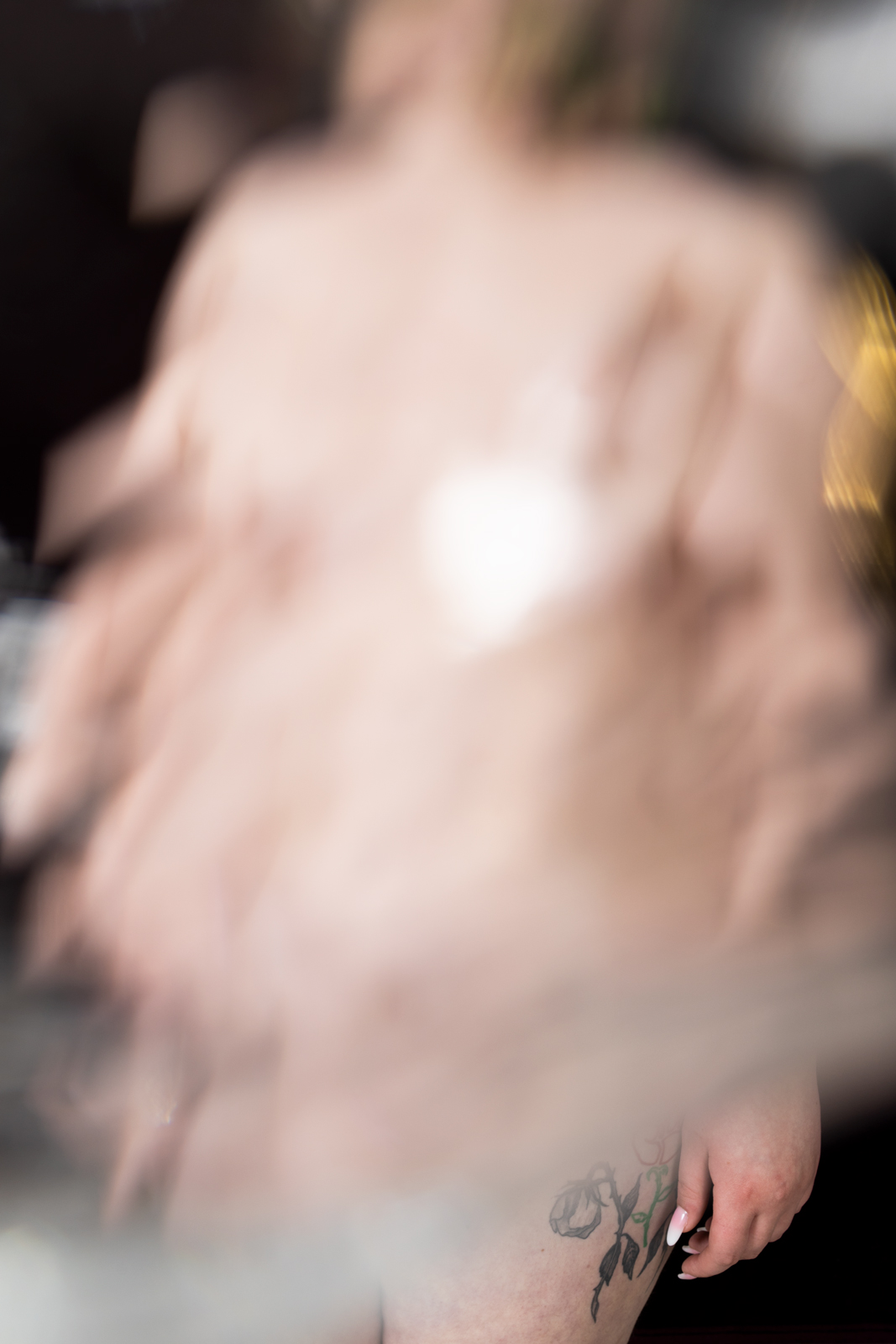

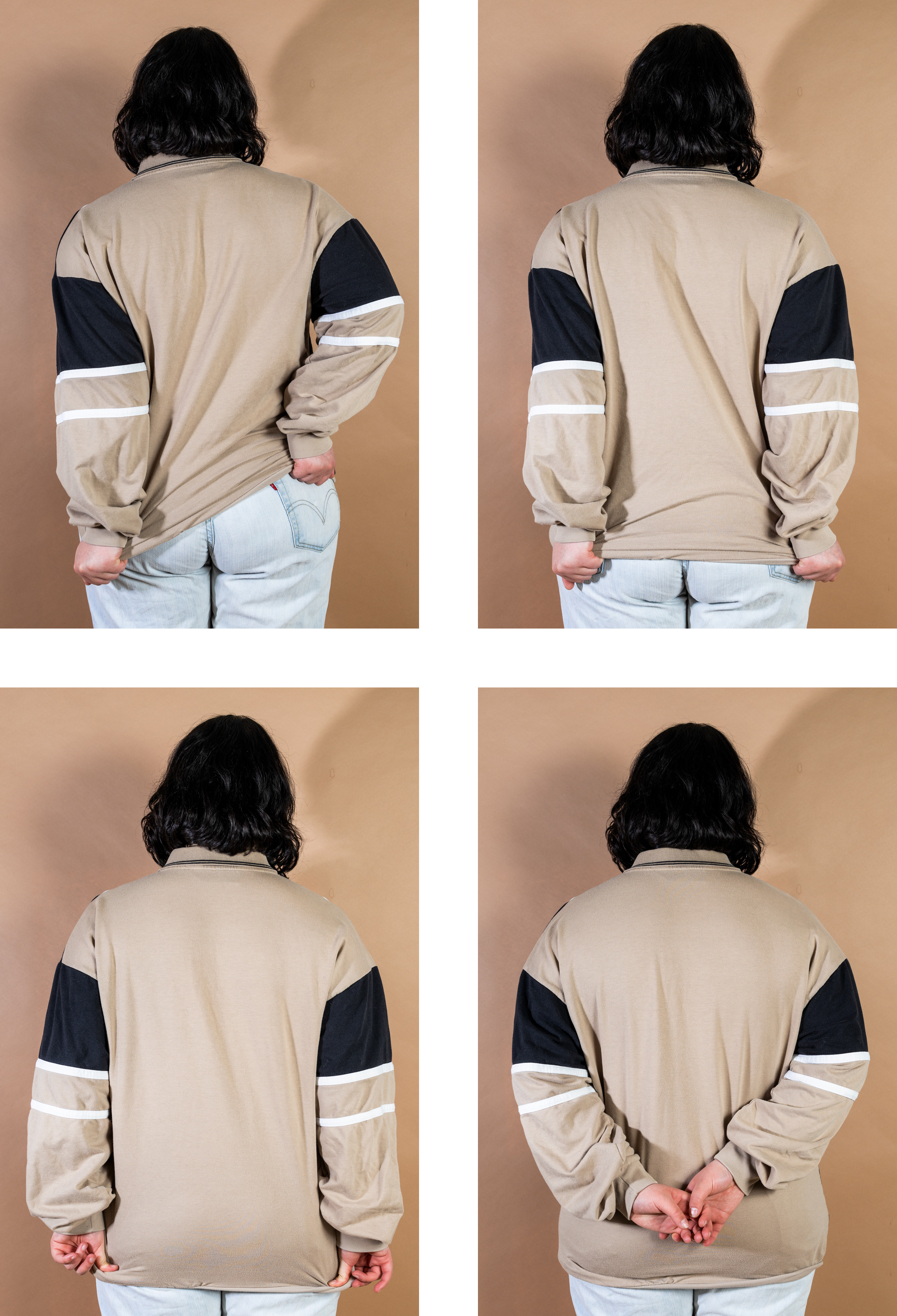

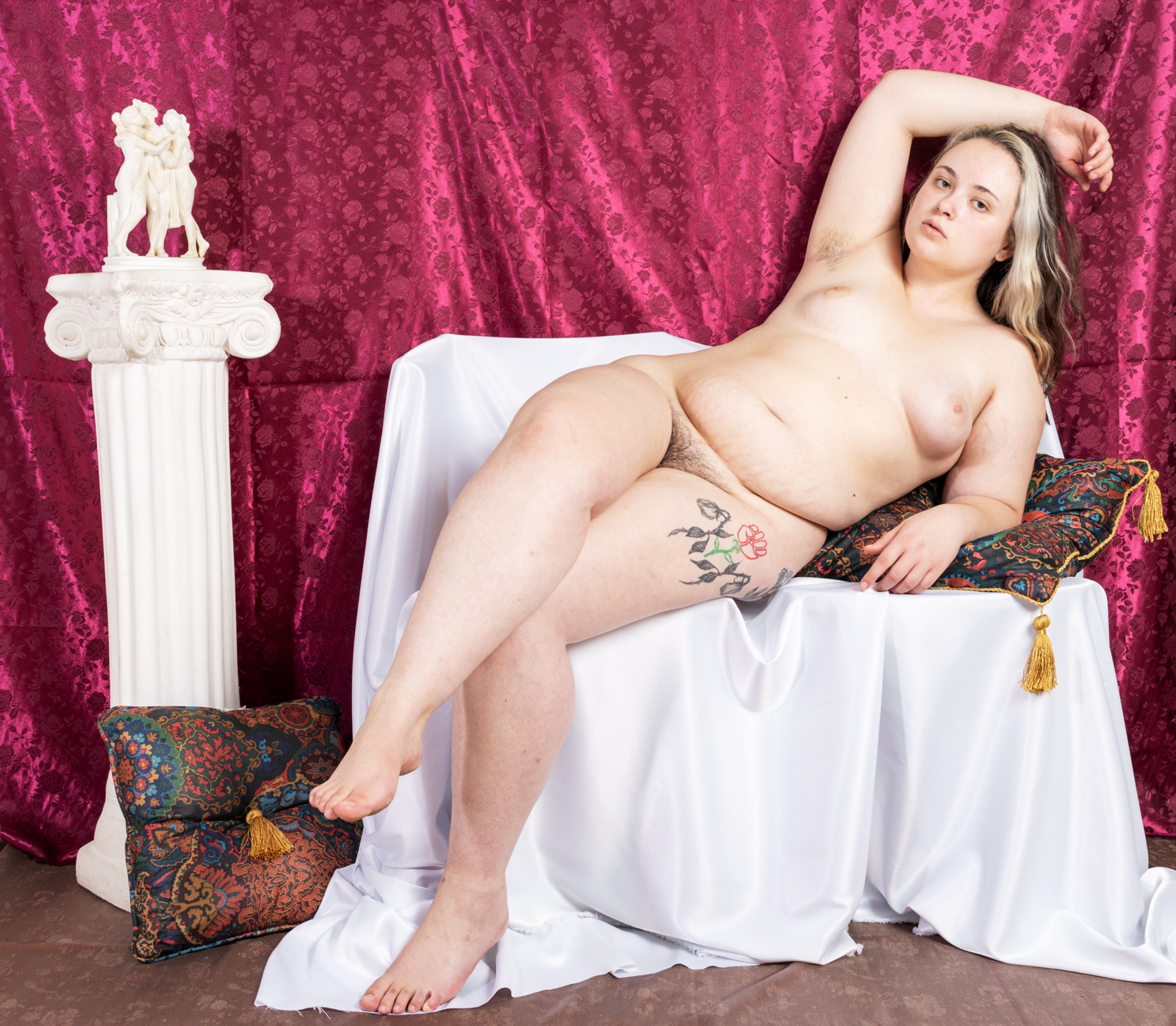















biography
Born in Boston, MA and raised in Andover, MA, Julianna Temple (she/her) centers her work around her experience with body dysmorphia. Through self-portraits she explores her relationship with her body and how that is affected by the media and trauma. She is inspired by Barbara Kruger, Cindy Sherman, and Jen Davis. Temple focuses her practice around important social justice topics that she deals with on a personal level, such as feminism and body positivity/neutrality, in order to start a conversation about what needs to be done to eliminate harmful ideals within our society.
interview
Juliana Temple in conversation with Holland Kay
HK: What do you want people to take away from looking at your thesis work?
JT: I hope that after viewing my work people will at least have a better understanding about how body dysmorphia can affect someone. From my experience it seems that people who have not dealt with this disorder tend to not understand how it works since it is often something that happens internally. The first step towards removing a stigma is listening to people in order to understand, so that is why I am trying to start a conversation with my work.
HK: Why photography? Why not another art form?
JT: My father inspired me to get into photography and I have been shooting since I was in early middle school. He works in film and has a passion for photography as well, so I would always get his old cameras when he upgraded. Ever since I can remember I said I wanted to be an artist when I grew up, and I think I decided on photography because it is what I am best at. I also think there is something special about capturing a specific moment in time that will never happen again in the same exact way. Many of the women in my family on my mom's side have had Alzheimer’s disease, so it is very likely I will have it someday too. I record my world with my camera in order to hold on to these memories as long as I can before I lose them.
HK: If we weren’t in a pandemic, would your project have been different?
JT: I don’t think this specific project would be different. However if there was not a pandemic I would have liked to explore some of the same ideas in my self portraits with other women. I am really interested in sharing other peoples stories about what I also go through, in order to get a wide array of perspectives.
HK: How does media play a role in your work?
JT: During the research process of this project I looked at a lot of different media that I was exposed to when I was growing up. Seeing what kind of girls and women were idolized in magazines, TV shows, etc. made me hypercritical of myself because I could never be that skinny and perfectly proportioned girl. This media is a huge reason that I have body dysmorphia in the first place and with this project I hope to start changing the culture around how women are portrayed, and I hope to show the importance of diversity in the media.
HK: Who are your influences?
JT: My first and most prominent influence is Barbara Kruger. I have also been drawn to how blunt and assertive her text is and how she is not afraid to speak about important issues. Kruger is who inspired me to always speak my mind and stand up for what is right, even if it makes others uncomfortable. I also take inspiration from Carrie Mae Weems, Jen Davis, Sally Mann, Cindy Sherman, Jess Dugan, among others.
HK: Why did you pick this topic? Did you consider others?
JT: I knew I was going to choose this topic for a while before the semester started. I struggle with my body image everyday and I have been wanting to share my experience for some time now. I often work on whatever is weighing on me the most at the time so it just felt right to tackle this topic now.
HK: Do you think if you included other women’s struggles with body dysmorphia, it would take away or add to the project? Did you consider including other people?
JT: I think this project needs to be just my journey since it is so personal. However, I definitely want to include other women’s struggles to learn about how they acquired this disorder, how they deal with it, and whatever else they choose to share, in order to spread even more awareness about this disorder.
HK: You’re using photos from your childhood and adolescence. Can you explain why you chose the photos you did?
JT: I was constantly photographed as a child, more than average. When I was looking through some old images of myself I noticed how my expressions changed over the years. There was always pressure to perform for the camera. I was always told to put on a “real” smile. When I was much younger, about 3-8, I was so happy to be in front of the camera and I would smile as big as I could. Then as I got older something was lost along the way. I did not have the same innocent glow in my eyes. I might be smiling in the image but it was clearly a façade. I hated being perceived and I was extremely uncomfortable in my body. The grid of images of me growing up is my attempt at trying to understand where it all went wrong. When and how did I lose my contentment with myself? When did I become so aware of the space that I take up? That is what I am trying to figure out with this work.
HK: Since you’re including photos from your childhood, what is your earliest memory of photography?
JT: My earliest memory of photography is when I was about 12 years old and I was at the seasonal campground I went to every summer with my family. I had my dad's old Canon DSLR (I cannot remember which one) and I was just blissfully walking around our site and capturing images of anything that caught my eye. Acknowledging the beauty of my surroundings and then taking images of it to keep for myself felt intimate and special. I was so proud of myself when I got the shot that I pictured in my head.
HK: What are your plans for the future?
JT: I honestly have no idea, and I am so okay with that. My whole life I have been in school on a very specific path and I have been more focused on the end goal while I watched my life pass me by. I hope to take a year or two to just experience life and stop focusing so much on where I want to end up. I will always be shooting because of my love for photography, but I am not really ready to jump head first into the industry.